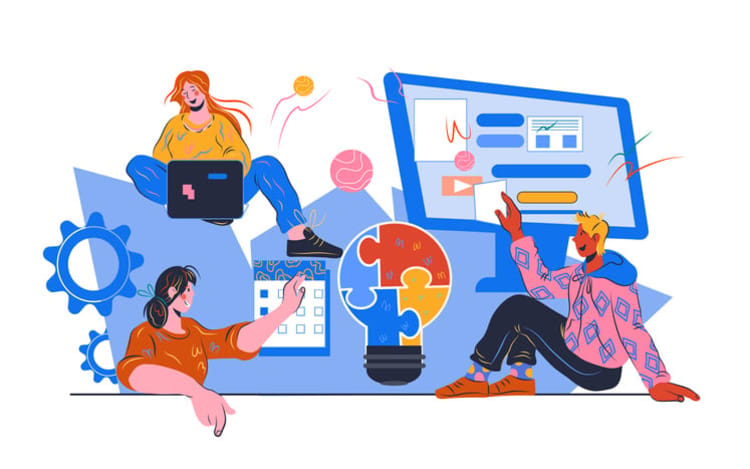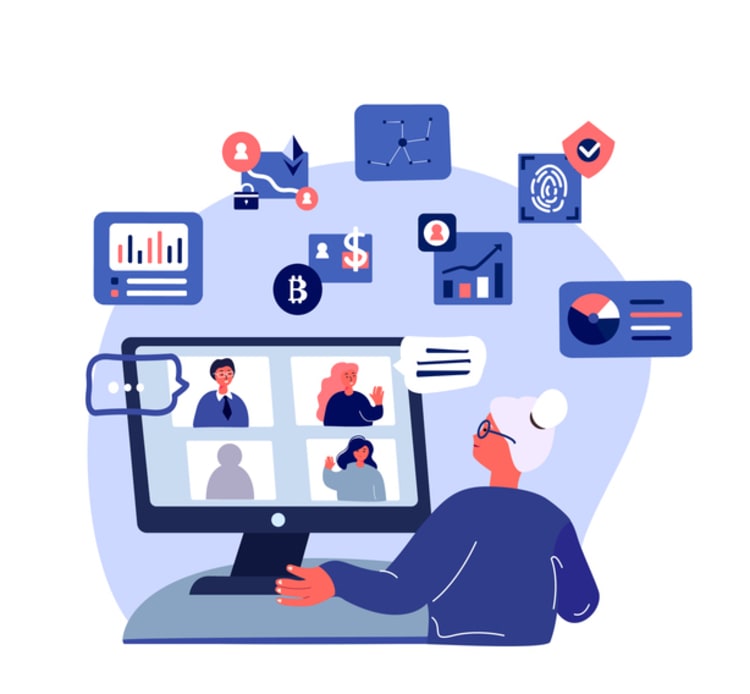Have you ever experienced the frustration of attending a poorly executed group meeting? One where attendees were unprepared, discussions were unproductive, and the whole experience left you wondering if anything was accomplished at all. What if there was a way to transform these unproductive gatherings into powerful team-building experiences that foster collaboration, communication, and decision-making? In this blog post, we will explore the power of group meetings and how they can unlock the full potential of your team.
By understanding the essence of group meetings, learning the keys to their effectiveness, and leveraging the benefits they offer to high-performing teams, you can revolutionize the way your team communicates and works together. We will also provide practical tips for conducting successful group meetings and introduce modern tools and technologies that can enhance your team’s collaboration experience.
Short Summary
- Group meetings are essential for fostering collaboration, communication and decision-making within teams.
- Keys to effective group meetings include a well-defined agenda, the right attendees, and an environment that encourages active participation.
- Leveraging meeting management software and remote collaboration tools can improve modern group meetings by increasing efficiency and effectiveness.
The essence of group meetings

Group meetings are essential for fostering collaboration, communication, and decision-making within teams. They provide a platform for team members to discuss ideas, share information, and work together towards common goals.
However, hosting effective team meetings requires proper planning and execution to ensure that all team members are on the same page, meeting objectives are met, and everyone’s time is used efficiently during productive team meetings.
There are various types of group meetings, each with a specific purpose, and understanding the different types can help you design and conduct more effective meetings. By inviting the right team members, establishing a clear agenda, and encouraging active participation, you can turn your team meetings into powerful tools for enhancing team cohesion, employee engagement, and overall team performance.
Purpose of group meetings
Group meetings can serve a variety of purposes, such as disseminating information, resolving issues, generating ideas, and fostering connections among team members. These meetings can range from brainstorming sessions and problem-solving meetings to status updates, all of which contribute to meeting objectives and ensuring that everyone stays informed and engaged.
Feedback is a crucial aspect of team meetings, as it encourages collaboration and enables employees to express their opinions and ideas, which can help develop leadership skills. By considering a few key factors before scheduling town hall meetings or any other type of meeting, you can maximize the team’s time and keep everyone informed, ensuring a more productive and successful meeting experience.
Types of group meetings
Group meetings can take various forms, such as team meetings, one-on-one meetings, and remote or in-person gatherings. Team meetings involve the entire team and focus on discussing ideas, sharing information, solving problems, and making decisions that affect the whole team. On the other hand, one-on-one meetings are more intimate and concentrate on a single team member, providing an opportunity for managers to stay apprised of potential issues arising on their team and gain insight from their direct reports.
In today’s fast-paced work environment, virtual meetings have become increasingly popular, allowing team members to collaborate and communicate effectively, even when working remotely. Asynchronous meetings, wherein the whole team records brief videos or populates a shared Excel spreadsheet, may also be suitable alternatives to traditional team meetings.
By understanding the different types of group meetings and their purposes, you can better tailor your approach to each specific meeting type and maximize their effectiveness.
Keys to effective group meetings

Effective group meetings require a well-defined agenda, the right attendees, and an environment that encourages active participation. Establishing alignment ensures that all participants are aware of the objectives and goals, which is imperative for attaining fruitful outcomes. To ensure alignment, effective communication techniques should be utilized, expectations should be set from the outset, and participation from all participants should be encouraged, as well as actively listening to their ideas and constructive feedback.
When conducted effectively, group meetings can be a powerful tool for maximizing productivity and preventing frustration. By following the keys to effective group meetings, you can ensure that your team stays focused, engaged, and motivated, ultimately leading to better decision-making, improved team cohesion, and enhanced overall performance.
Establishing a clear meeting agenda

A clear meeting agenda is crucial for ensuring that attendees are adequately prepared and can remain focused on the topics discussed. By providing attendees with adequate advance notice and a well-defined agenda, you give them the opportunity to review relevant materials, come up with potential solutions or ideas for addressing any issues that may arise, and stay on track during the meeting.
It’s generally recommended that team meetings be held.
- Last for an hour, which allows enough time to cover all agenda items without causing excessive fatigue or loss of focus
- Set a clear agenda and stick to it to avoid unnecessary digressions
- Ensure that your team meetings are productive and efficient, leading to better outcomes for your team and organization.
Inviting the right team members
Inviting the pertinent team members guarantees that all pertinent stakeholders are informed and can participate in the dialogue. This strategic selection of attendees ensures:
- Alignment and clarity
- Facilitates open communication
- Promotes efficient decision-making
- Encourages active participation in the meeting.
By carefully considering who should attend a meeting, you can ensure that all relevant stakeholders are aware of the meeting and can provide input into the conversation, leading to more productive and effective team meetings. Additionally, inviting the appropriate team members to group meetings promotes:
- inclusion
- a sense of belonging within the team
- Positive impact on employee engagement
- Overall team performance
Encouraging active participation
Fostering active involvement in group meetings is of great importance as it:
- Encourages engagement and participation of all team members
- Facilitates collaboration and exchange of ideas
- Boosts the diversity of perspectives and insights
- Enhances problem-solving and decision-making processes
- Creates a sense of ownership and accountability among team members.
To promote active participation in group meetings, it is important to:
- Set clear expectations
- Offer incentives
- Create a secure and comfortable atmosphere
- Utilize interactive activities
- Invite open dialogue
By encouraging active participation, you can foster a more inclusive and collaborative environment in your team meetings, ultimately leading to better decision-making, stronger relationships, and increased overall productivity.
Benefits of group meetings for high performing teams

High-performing teams can greatly benefit from group meetings through improved communication, strengthened relationships, and enhanced productivity. Group meetings provide a platform for team members to communicate openly, which can lead to constructive feedback and continuous improvement. Furthermore, regular team meetings can foster better relationships between team members, boosting morale and promoting a positive company culture.
By leveraging the benefits of group meetings, high-performing teams can ensure that everyone is informed, engaged, and working towards common goals. This collaborative environment can lead to increased productivity, improved decision-making, and overall team success, ultimately contributing to the growth and success of the organization.
Improved communication
Group meetings facilitate better communication by allowing team members to share information, ideas, and feedback in real-time. This open exchange of ideas fosters a more cohesive understanding between all parties and enables the rapid resolution of any potential issues. By promoting open communication within your team, you can create an environment where everyone feels comfortable expressing their ideas and concerns, ultimately leading to more effective problem-solving and decision-making.
Team meetings are an effective way to improve the communication among different departments in a company or organization. This can help managers accomplish their goals more efficiently. To ensure that your team meetings are productive and efficient, follow these steps:
- Establish a clear meeting agenda.
- Invite the appropriate team members.
- Encourage active participation. By following these steps, you can promote better communication, stronger relationships, and increased overall team performance.
Strengthened relationships
Organizing regular group meetings can help foster rapport and trust among team members, thus strengthening their working relationships. These meetings provide an opportunity for:
- Personal interaction
- The exchange of ideas
- Deepening the team’s bond
- Creating a sense of camaraderie
Establishing a positive relationship among team members enables individuals to collaborate without feeling uncomfortable or excluded. This sense of belonging can improve employee morale and lead to superior work performance within the organization. By leveraging the power of group meetings, you can create a supportive and inclusive environment that fosters strong relationships and drives team success.
Enhanced productivity
When conducted effectively, group meetings can boost productivity by:
- Aligning team members on goals, tasks, and expectations
- Providing a platform for team members to communicate openly and exchange ideas
- Ensuring that everyone is working towards the same objectives
- Helping tasks to be completed efficiently and effectively.
Group meetings offer several benefits, including:
- An opportunity for team members to brainstorm and generate innovative solutions to challenges
- Improved problem-solving and decision-making processes
- Enhanced productivity of high-performing teams
- Contribution to the overall success of the organization
Practical tips for conducting successful group meetings

To ensure successful group meetings, it’s essential to consider a variety of factors, including scheduling, meeting facilitation techniques, and post-meeting follow-up. By taking these factors into account, you can create a more productive and efficient meeting experience for your team, ultimately leading to better outcomes for your organization.
In the following sections, we will provide practical tips for each of these areas, ensuring that you have the tools and knowledge necessary to conduct successful group meetings that drive team performance and contribute to the overall success of your organization.
Scheduling considerations
Scheduling considerations are vital when hosting group meetings to guarantee that team members are aware of their roles, arrival times, and work locations. Efficient scheduling enhances concentration during meetings, minimizes task switching time, and facilitates the prioritization and assignment of tasks. It also allows for the clear definition of the objectives and purpose of the meeting, and guarantees that key decision-makers are present.
When determining a suitable time for all participants, one should consider factors such as convenience. It’s generally recommended that team meetings last for an hour, which allows enough time to cover all agenda items without causing excessive fatigue or loss of focus.
By taking scheduling considerations into account, you can ensure that your team meetings are productive, efficient, and beneficial for all participants.
Meeting facilitation techniques
When facilitating a meeting, it is important to set the tone, manage time, and ensure that all voices are heard. Establishing the tone of a meeting involves creating an atmosphere that is conducive to productive discussion and collaboration. This includes defining expectations for the meeting, setting ground rules, and stimulating active participation.
Managing time entails establishing a timeline for the meeting, adhering to the timeline, and guaranteeing that all topics are addressed. By utilizing effective meeting facilitation techniques, you can create an environment where everyone feels comfortable expressing their ideas and concerns, ultimately leading to more effective problem-solving and decision-making.
Post-meeting follow-up
Summarizing and establishing action items following a meeting facilitates guaranteeing that all participants comprehend the same information and have a precise comprehension of what needs to be accomplished next. It is necessary to ascertain that objectives are fulfilled and progress is monitored.
Adhering to action items is essential in order to:
- Stay abreast of the to-do list
- Fulfill team objectives in a timely manner
- Surmount obstacles
- Address matters before they become more complex
By implementing diligent post-meeting follow-up, you can ensure that your team stays on track, remains accountable, and continues to work towards the successful completion of tasks and objectives.
Tools and technologies for modern group meetings

Modern group meetings can be enhanced with the use of meeting management software and remote collaboration tools. These tools and technologies can facilitate meetings by providing a structured agenda, taking meeting notes instantly, and integrating with video conferencing software, like Kumospace to optimize efficiency and effectiveness.
In the following sections, we will explore some of the most popular meeting management software and remote collaboration tools available today, helping you choose the best solutions for your team and ensuring that your group meetings are productive, efficient, and successful.
Meeting management software
Meeting management software is essential for modern group meetings as it aids in optimizing organization, collaboration, and efficiency. It facilitates the following:
- Proper planning and execution of meetings
- Creation of collaborative agendas
- Enhancement of meeting participation
- Quick discovery of suitable meeting spaces
- Promotion of cross-functional collaboration
Utilizing meeting management software can bring improved organization, collaboration, and efficiency. It enables teams to:
- Plan and execute meetings more proficiently
- Formulate collaborative agendas
- Assign tasks and monitor progress
- Locate suitable meeting spaces
- Encourage cross-functional collaboration
In conclusion, it boosts the productivity and effectiveness of group meetings.
Remote collaboration tools
Remote collaboration tools, including Kumospace, provide teams with the capability to effectively collaborate while working remotely. These tools allow team members to communicate, share ideas, and work together on projects, regardless of their physical location. By leveraging remote collaboration tools, you can ensure that your team stays connected and productive, even when working from different locations around the world.
Kumospace, a popular remote collaboration tool, offers a unique virtual environment that mimics the experience of in-person meetings. With features such as spatial audio, customizable avatars, and interactive environments, Kumospace helps teams feel more connected and engaged during remote meetings. By incorporating remote collaboration tools into your team’s workflow, you can enhance communication, collaboration, and overall team performance.
Summary
In conclusion, the power of group meetings can be unlocked by understanding their essence, implementing the keys to their effectiveness, and leveraging the benefits they offer to high-performing teams. By incorporating practical tips for conducting successful group meetings and utilizing modern tools and technologies, you can revolutionize the way your team communicates and works together.
Transform your team meetings from unproductive gatherings into powerful team-building experiences that foster collaboration, communication, and decision-making. Embrace the power of group meetings and watch your team soar to new heights of success.
Frequently Asked Questions
A group meeting is a communicative session used to handle decision-making, brainstorming, critical thinking and news-sharing, with the aim of helping to build a connection between team members and direct them towards achieving the organization’s goals.
It is an effective way to ensure that everyone is on the same page and that all ideas are heard and considered. It also helps to foster collaboration and encourages team members to work together to come up with creative solutions.
Group meetings can be used to discuss strategies, review progress, and brainstorm new ideas. They are.
There are 6 common types of meetings: Board, Management, Project, Staff, Video Conferencing, and Virtual. Each type serves a specific purpose, making it essential to choose the appropriate one for your needs.
For example, a Board meeting is typically used to discuss strategic decisions, while a Management meeting is used to review progress and discuss operational issues. A Project meeting is used to review the progress of a specific project.
Meetup is still a widely-used platform for people looking to make connections with others. With over 44 million users across 193 countries, over 15,000 daily events, and 30 million hours of human connections annually, Meetup remains an invaluable tool for those seeking companionship or just something new and interesting to do.
It is a great way to meet new people, explore new places, and learn new skills. Whether you are looking for a new hobby, a new job, or just a hobby.
Effective group meetings require an agenda, the right attendees, and an environment that encourages participation for success.
Creating an agenda that is clear and concise is essential for a successful meeting. It should include the topics to be discussed, the desired outcomes, and the timeline for the meeting. Inviting people to come.
Ensure the right team members are invited to a meeting by carefully considering who should attend and ensure all relevant stakeholders are included.





